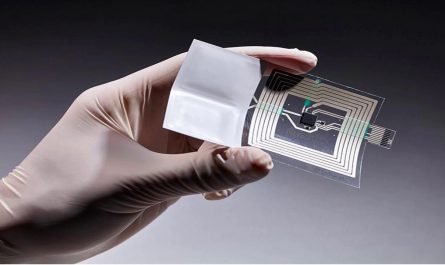The major omics domains include genomics, epigenomics, transcriptomics, proteomics and metabolomics. Genomics studies the structure, function, evolution and mapping of genomes. Epigenomics examines heritable epigenetic changes that affect gene expression without altering the underlying DNA sequence. Transcriptomics analyzes the RNA transcripts or gene expression patterns in a cell or tissue. Proteomics discovers and quantifies the entire set of proteins. Metabolomics identifies and quantifies the small molecule metabolites or end products of cellular processes.
Cross-Domain Integration
While individual omics layers provide valuable insights, their integration allows a system-level understanding that is greater than the sum of individual parts. Multiomics Integrative omics marries different types of omic data like genomic variants and epigenetic modifications to gene expression profiles and ultimately linking these changes to protein and metabolite abundances. This cross-domain integration helps uncover new biological associations and regulatory mechanisms. For example, the interplay between genomic mutations, epigenetic changes, altered gene and protein expression ultimately impacts metabolic pathways and phenotypes. Integrative omics facilitates exploration of such combinatorial effects which traditional single-omics studies fail to decipher.
Technological Advances Driving Multiomics
Recent years have witnessed tremendous progress in high-throughput omics technologies like next-generation sequencing, mass spectrometry and microarrays. These platforms now enable affordable, simultaneous profiling of multiple omics layers from a single biological sample. Advanced computational approaches leverage machine learning, network analysis and pathway modeling to integrate diverse types of omics datasets. Furthermore, single-cell omics now offers cell-specific resolution for understanding heterogeneous cell populations and developmental processes. These technological breakthroughs have revolutionized biological research by making integrative omics analyses scalable and practical.
Applications in Healthcare
Integrative omics finds widespread applications in healthcare and precision medicine. Integrated omics of tumor samples is unraveling the molecular underpinnings of cancer subtypes and prognosis. Such insights aid patient stratification for targeted therapies. Integrative omics of patient blood can reveal novel biomarkers for early disease detection and monitoring treatment response. Understanding disease states at multiple biological layers also facilitates drug discovery. Integrative omics profiling of stem cells helps design cell-based therapeutics. Beyond disease research, integrative omics expands our knowledge of human health and physiology through projects like the Human Genome Project and the newly launched Human Cell Atlas initiative.
Environmental Impact Assessment
In environmental research, integrative omics helps assess toxicological effects of pollutants and classify contaminated sites. It aids monitoring of ecosystem health by analyzing omics responses to climate change, chemical exposures or other stressors across phytoplankton, plants and animals. Multiomics reveals synergistic or antagonistic interactions between multiple environmental factors. Omics profiles of soil microbes enable exploring carbon and nutrient cycling processes as well as inform agricultural practices. Integrative omics tools evaluate how toxins bioaccumulate in food webs and their impacts on wildlife conservation.
Microbial Community Profiling
One emerging application is microbial integrative omics which examines the “microbiome” – host-associated microbial consortia impacting various ecological niches and human physiology. By surveying metagenomic, metatranscriptomic, proteomic and metabolomic data, it characterizes diversity, distribution and functional activity of microbial species within complex microbiomes like human gut, soil or ocean environments. Integrative omics reveals how microbial communities adapt to environmental changes, compete with pathogens or respond to prebiotics and probiotic therapies. It helps design synthetic microbial communities for industrial applications and sustainability goals like bioremediation or nutrient recycling.
Future Directions
Going forward, multiomics will delve deeper into regulatory networks by analyzing more cell types/lineages, single-cell resolution and complex tissues and organs. Longitudinal integrative omics studies will monitor dynamic biological processes across space and time. Integrative omics approaches will grow increasingly clinical by incorporating medical history, lifestyle/exposure data as well as imaging and other -omic layers. Fusion with multi-omics methods like lipidomics, glycomics and lipidomics will provide comprehensive system-level characterization. Advancing integrative omics technologies combined with powerful analytics and multi-disciplinary expertise promises groundbreaking bio-discoveries with tremendous benefits for human health, environment and industry.
Note:
1. Source: Coherent Market Insights, Public sources, Desk research
2. We have leveraged AI tools to mine information and compile it




